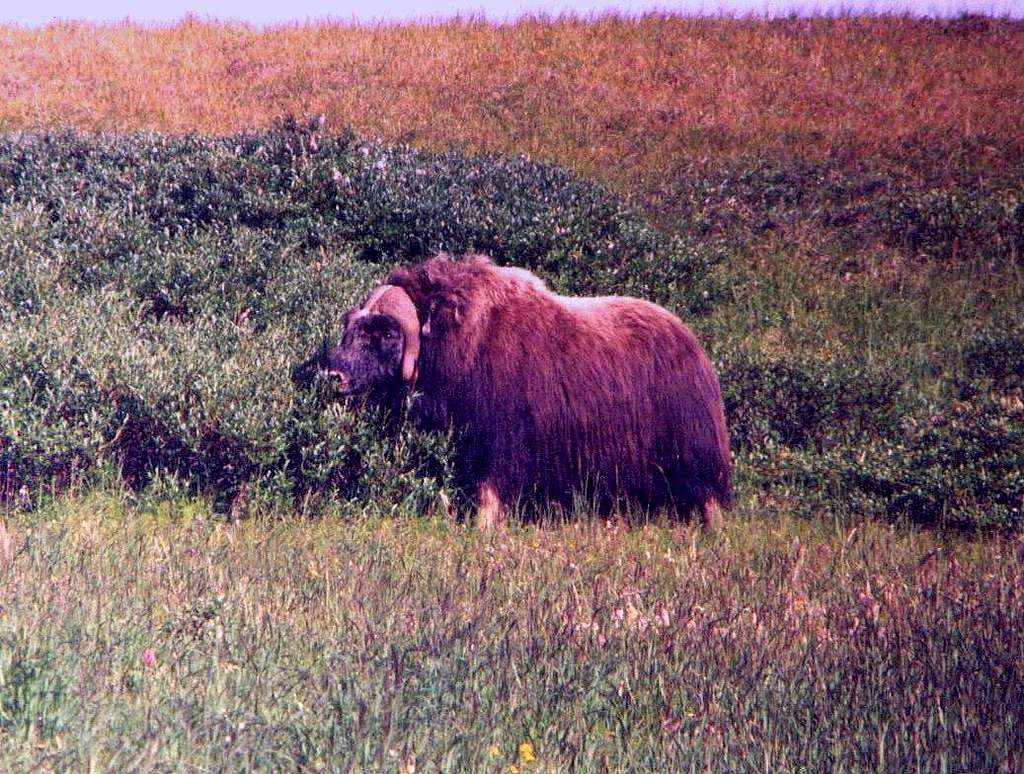
Descendent of the Wooly Mammoth?
An alerted muskox bull grazes on tundra grass east of Nome, Alaska.
The normal defensive behavior of these shaggy mammals is to form a circle,
facing outward, with the young in the middle. This practice works fine in
warding off wolves, but leaves the muskox vulnerable to the hunter's gun.
As members of the subfamily Caprinae of the family Bovidae,
muskoxen are more closely related to sheep and goats than to oxen, but are
in their own genus, Ovibos. Both genders have long curved horns.
Their coat, a mix of black, gray and reddish-brown, includes long guard hairs that reach almost to the ground.
Muskox wool, or qiviut (an Inuit word), is highly prized for its softness,
length, and insulation value. Prices for yarn range between $40 and $80 per
ounce (28 g).
The muskox, or its ancestor, is believed to have migrated to North America
between 200,000 and 90,000 years ago. It's agreed, however, that the muskox
was alive in the Pleistocene period, making it a contemporary of the Mammoth.
It's thought that the muskox was able to survive the last ice age
(Wisconsin glaciation) by finding ice-free areas away from prehistoric
peoples. The muskox gradually moved across North America and arrived in
Greenland during the late Holocene.
Shaggy muskoxen once inhabited most of western Alaska's Seward Peninsula.
But they were hunted out, and not until 1970 did the oomingmak, or
bearded one, again thunder across the tundra.
That year biologists from the Alaska Department of Fish and Game
transplanted 35 muskoxen to the peninsula. In 1981 they brought in 34 more.
Now, the peninsula has over 300 muskoxen spread between several main herds
and splinter groups.
During the short Alaskan summer, muskoxen live in wet areas, such as river
valleys, moving to higher elevations in the winter to avoid the deeper
snow collecting on the tundra. They graze on grasses, reeds, and sedges,
digging through snow in the winter to reach their food.
The last known muskox population outside North America lived on the
Taymyr Peninsula of Siberia, and died out about 2,000 years ago.
(Photo taken August of 1996 on the Seward Peninsula east of Nome, Alaska).









Comments
Post a Comment